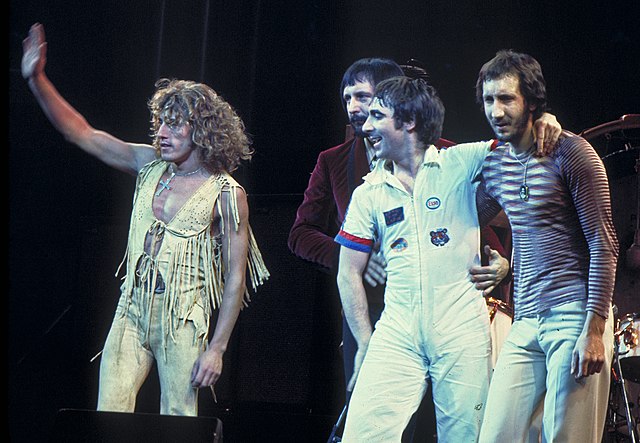Released on The Who’s iconic 1971 album “Who’s Next”, “Baba O’Riley” has transcended time to become one of rock’s most enduring anthems. This song resounds across generations with its compelling themes of rebellion, resilience, and the search for meaning. Famous for its pulsating synthesizer intro, introspective lyrics, and energetic composition, it is more than just a classic rock track—it’s a cultural symbol of youth’s spirit and defiance, remaining as relevant today as when it first captivated audiences in the early ’70s.
The unusual name “Baba O’Riley” combines two massive influences in Pete Townshend’s life: Meher Baba, an Indian spiritual master advocating purity and inner strength, and Terry Riley, a pioneer of minimalist music whose hypnotic synthesizer loops inspired the track’s unique sound. This mix of spiritual guidance and avant-garde musical innovation resulted in a track that is both futuristic and deeply human.
Musically, “Baba O’Riley” opens with one of rock’s most recognizable synth riffs, created from looping sequences on the Lowrey organ, building a trance-like hypnotic effect. The entry of Keith Moon’s powerful drumming adds an energetic burst, contrasting beautifully with the smooth electronic sounds. The piano and guitar interludes provide a wild abandon reflecting themes of freedom and unrestrained joy. What elevates this classic is the powerful combination of Roger Daltrey’s vocals with Townshend’s visionary composing, capturing moods both rebellious and introspective.
The haunting chorus, “Don’t cry / Don’t raise your eye / It’s only teenage wasteland,” evokes youthful angst and defiance. The phrase “teenage wasteland” dramatically captures the disillusionment experienced by young people feeling lost amid societal chaos—a sentiment that spoke deeply to the counterculture of the ’60s and ’70s, and still strikes a chord now. Townshend explained this was meant to express the chaotic uncertainty of youth. The closing line “They’re all wasted!” carries multiple meanings: from the loss of potential, to despair, or even a celebration of living intensely—a duality that touches the complexity of the human experience.
Its cultural impact is massive; “Baba O’Riley” is an anthem of rebellion and resilience, featured in numerous films and TV shows—from “One Tree Hill” to “Stranger Things”—and remains a staple of youthful energy and road trip thrill. Covered by diverse artists like Pearl Jam and indie bands, its universality shines through different genres, making it a song deeply personal to everyone who listens.
Live, “Baba O’Riley” is a fan favorite and concert closer for The Who, delivering an electrifying experience with Townshend’s iconic windmill guitar strums and Daltrey’s impassioned vocals. When audiences sing the “teenage wasteland” chorus in unison, it’s a powerful moment of shared youthful spirit and unity.
The song also acts as a vessel for The Who’s legacy, embodying themes of alienation, self-discovery, and resilience. It connects generations—parents and children alike—through its timeless message. Pete Townshend himself reflects on the song as a mirror of his youth and journey, making it not just a track, but a life companion for many fans.
Over 50 years later, “Baba O’Riley” continues to inspire. Its experimental sound, powerful lyrics, and raw emotion make it a timeless piece capturing the indomitable human spirit. As Townshend puts it, “It’s only teenage wasteland,” but beneath those words lies a timeless anthem speaking to anyone who has ever felt young, wild, and ready to take on the world.
